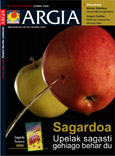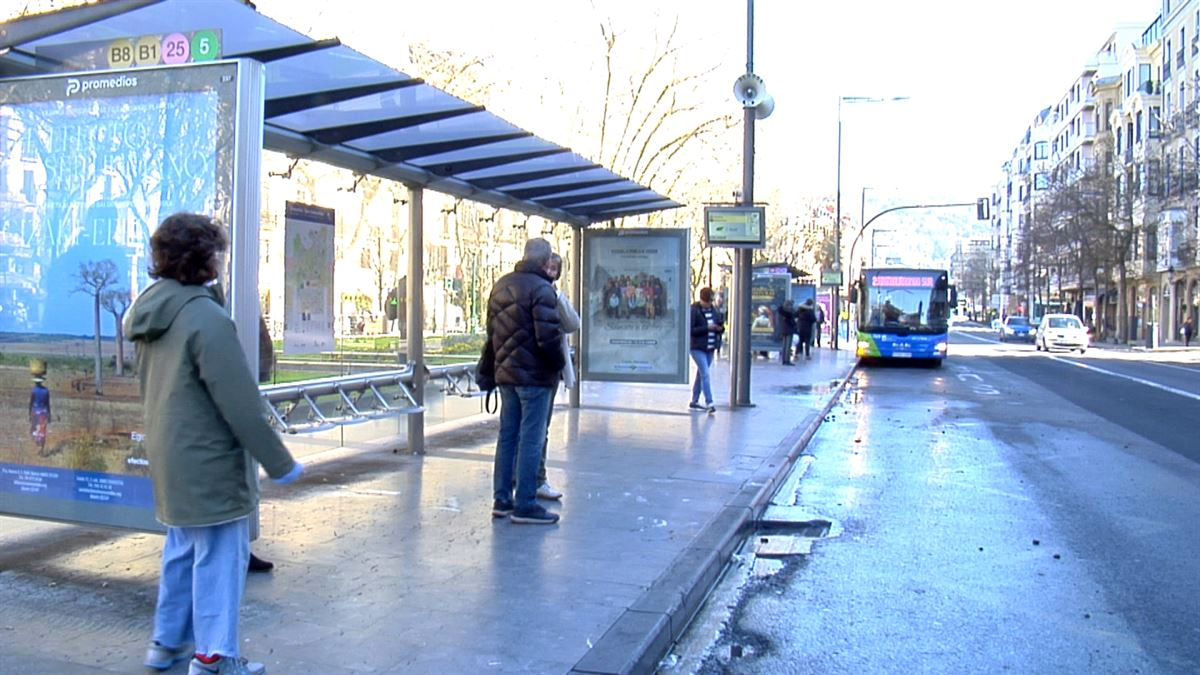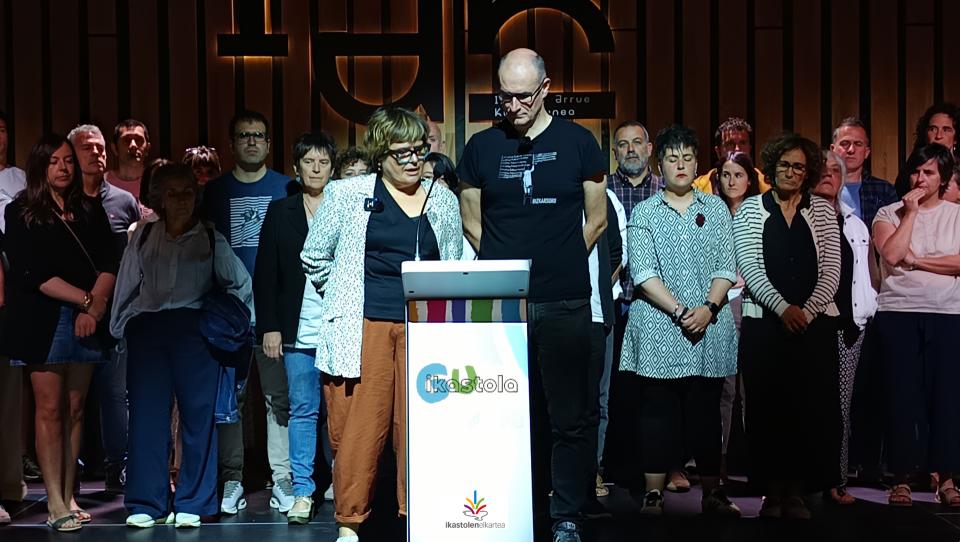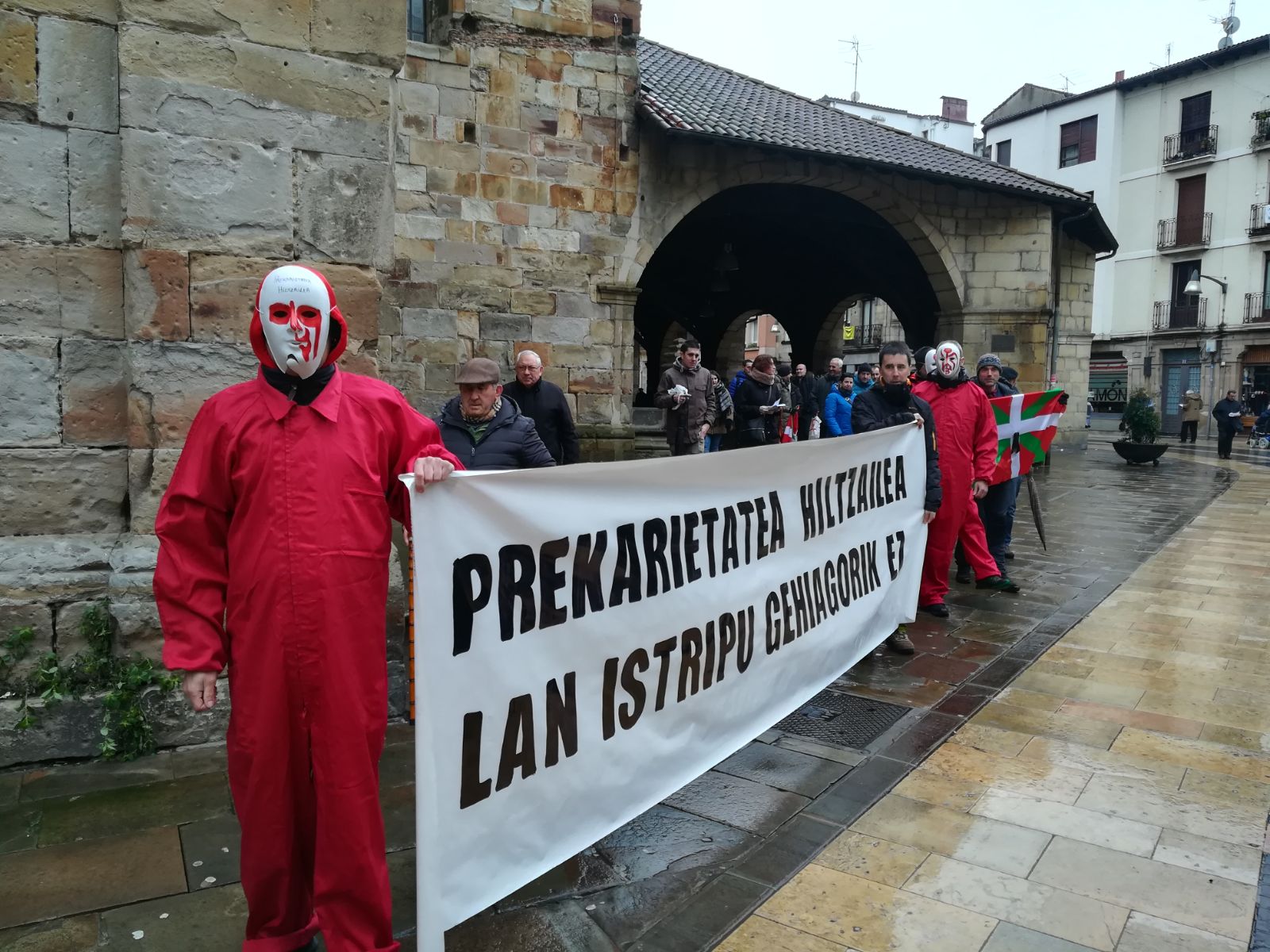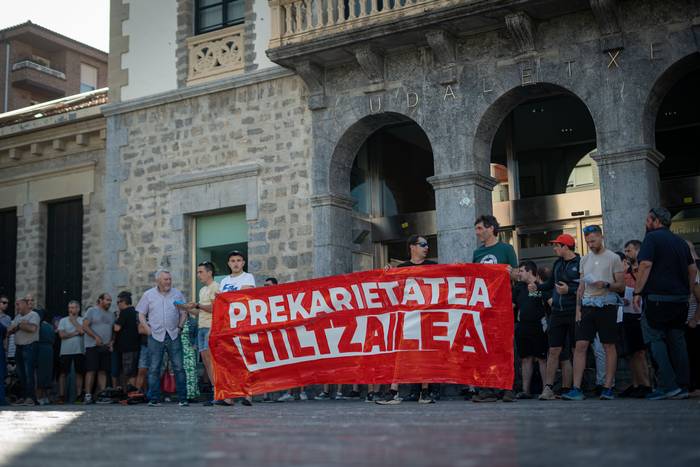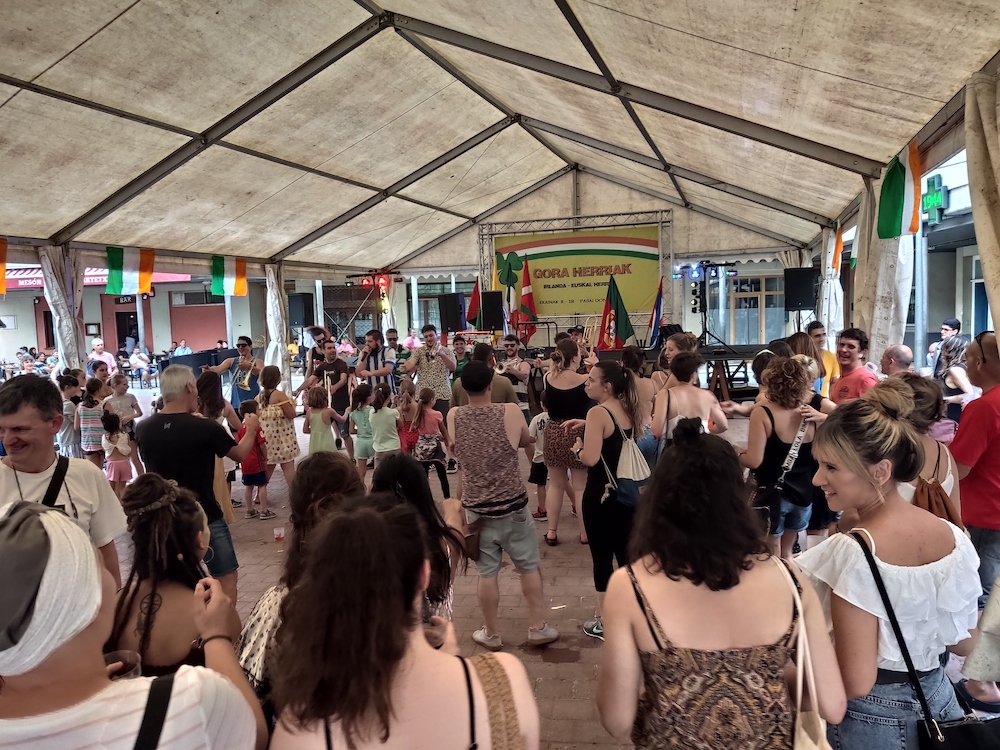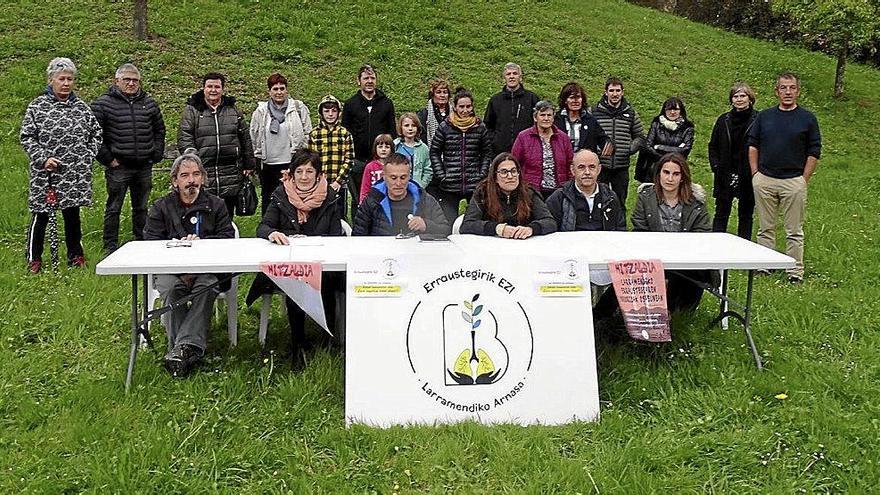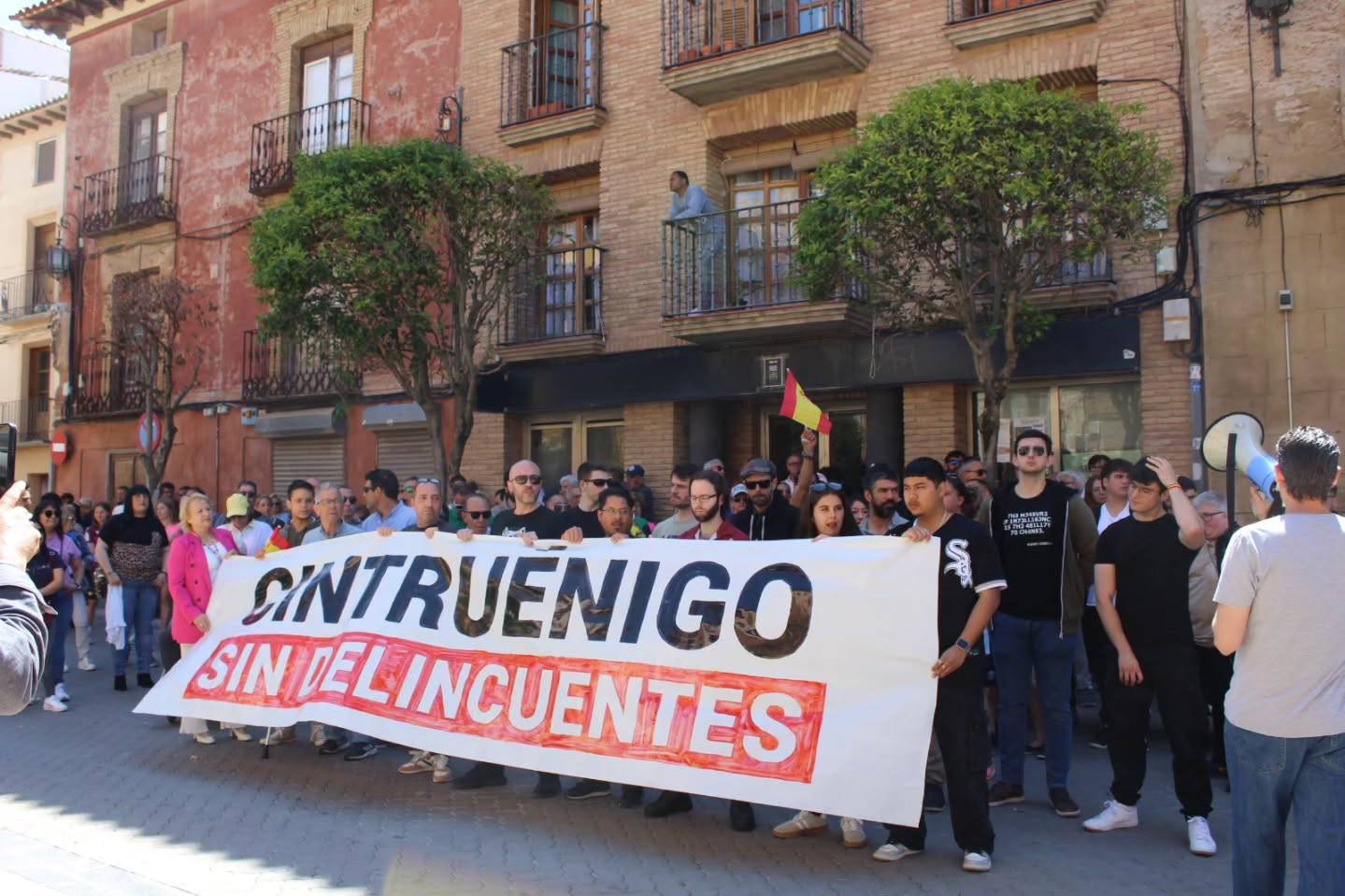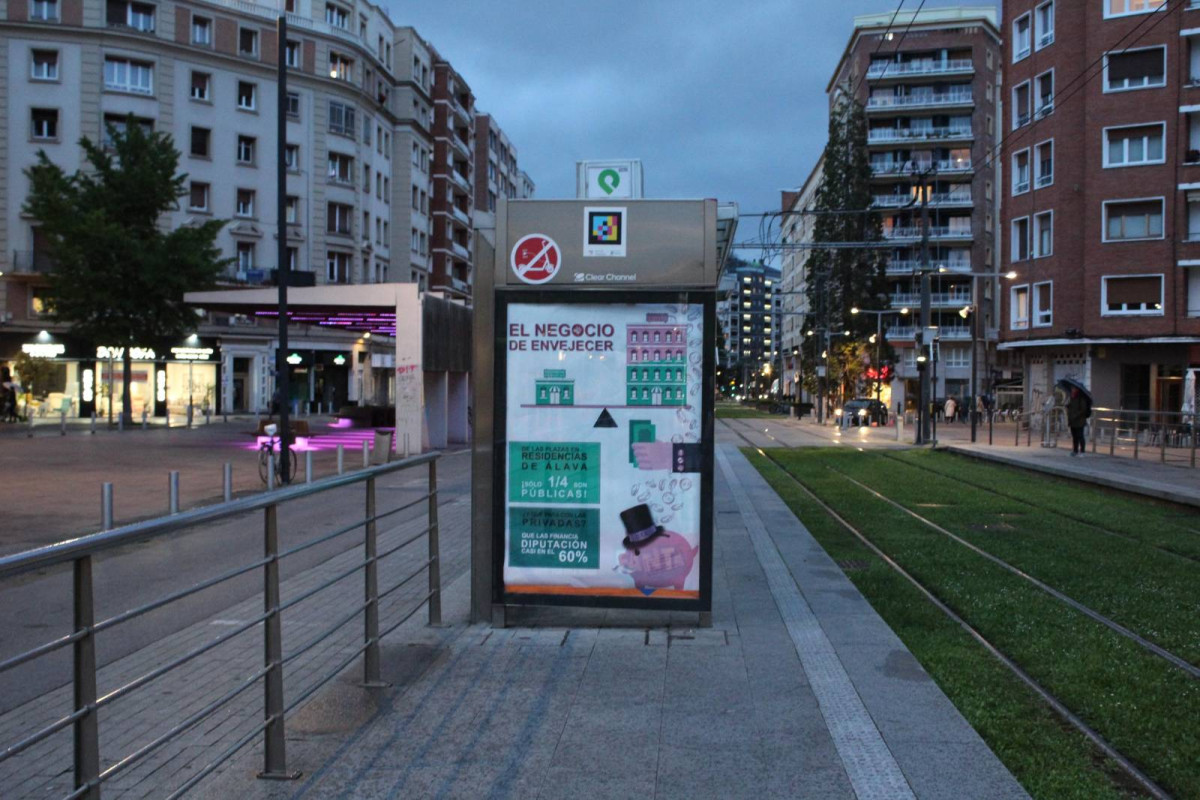Society
Environment
Politics
Economy
Culture
Basque language
Feminism
Education
International
Opinion
friday 30 may 2025
Automatically translated from Basque, translation may contain errors. More information here. 
Looking for a good apple to fill the bottle
- The main impossibility of the Basque cider industry is the lack of native apples. Cider makers have to go outside every year looking for apples. With the aim of promoting a suitable local apple for cider, Sagardo Mesa is studying the situation of several ciders in Gipuzkoa with the help of the consultancy company Sagarlan de Usurbil.
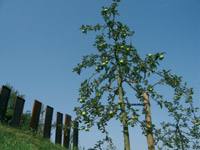
SagastiaMaddi Soroa
The strategic plan for the cider sector was launched by cider makers in Gipuzkoa in 2005. From cider house to cider house, a diagnosis was made to analyze the situation of the wineries and the needs of each cider maker. From there, the Cider Table was created: It is made up of several cider producers in Gipuzkoa and its work is supported by almost all cider producers in Gipuzkoa. Since its establishment, three studies have been conducted: market research, sagastia research and winery research. The idea is to make decisions with their results that will be applied throughout the sector.
The largest amount of liters of cider is produced in Gipuzkoa, but they do not have enough to make all those liters of apples. Half a century ago, apple trees were the main elements of the landscape of much of the Basque Country. After the War of 36, scarcity led to the planting of pine trees. In the last fifty years, there has been little apple cultivation, no priority in the tasks of farmers and peasants. In addition, there has been a generational change. As a result, the knowledge to properly preserve the apple culture and apple trees has been lost.
According to data from the Provincial Council of Gipuzkoa, there are approximately 300,000 apple trees scattered over 800 hectares in Gipuzkoa. It is dominated by bittersweet varieties. Last year more than fifteen and a half tons of apples were used to make cider, of which 45% were from Gipuzkoa, another 45% from France, 8% from Galicia and 2% from the Czech Republic, Asturias and Bizkaia.
At the request of the Cider Table, the consultancy firm Sagarlan de Usurbil is carrying out the research on cider in Gipuzkoa. The sagasti that are being studied are the sagasti of the apple suppliers of the ciders. Since it was not possible to study all the sagasti, about 250 sagarittarians were selected – some of them have two or three sagasti. Work began in June and is expected to be completed by around March.
Sagastia is being evaluated and technically classified in Sagarla. It is a study linked to the soil, so it has nothing to do with oenology. Next, Neiker will perform a statistical analysis of this.
Aitor Etxeandia and Antton Olaizola are the technicians of Sagarlan. They have been working as consultants in the fruit industry for many years and are also involved in apple processing: They make a product called Apple Dulce and apple juice.According to Sagarlan technician
Antton Olaizola, the objective of this evaluation is to analyze which of the existing sagastas can be included in an approval process; this process should ensure the minimum number and quality of apples. On the other hand, the preparation of an improvement plan to favor the homologation of sagastias that, over time, do not initially enter.
The cultivation of cider apples in the Basque Country is very heterogeneous; different breeding systems and rootstocks (ungrafted trees) are used. Many types of apples are planted in apple trees and most of the time they are not aligned. In addition, the number of plots in our farms can be large.
Olaizola says that “there are no professionals in the sector in the need for education in apple care is evident. As a result, the trees yield less apples and the quality of the apple is also
different.” A diagnosis is being made for each farm and each farm. They study the sagastis one by one. In addition to the study of the varieties of apples they have planted, they measure a wide range of other parameters: the suitability of the plantation; the slope; the land maintenance carried out; the level of health of the apples; the methods they have used to carry out health treatments; whether or not fertilization is carried out and what is used if it is carried out; the intensity of the sprouting; the planting of the apples and the training of the landowners for their care; the rootstocks used; the driving system: the ship, the central axis, etc.; the peeling; the machinery; the orientation of the sagastia in relation to the last years; the position of the site of the site for the site of the site.
On the other hand, the Basque Apple Research Group (ESI) began working in the 1970s to recover and promote the local apple used for cider in Gipuzkoa, in view of the evacuation of the farms and the loss of cider trees. The work of this group was then the basis of the Pomological Promotion programme launched by the Provincial Council of Gipuzkoa, which has celebrated its twenty-fifth anniversary in 2007.
If you remember the background, at the beginning of the 20th century there was a proposal to make the pomological station in Fraisoro de Zizurkil. A cider department and a cider research programme were opened; an experimental cider house was established and a committee of experts in pomology was set up. These initiatives were led, among others, by H. By Delaire, Vicente Lafitte and Ignacio Gallastegi. After the War of 36, the cider industry resumed in Fraisoro in 1975. In fact, they offered a course on cider making methods for this.
However, in the 1970s, farms were generally being evicted; farmers were leaving the countryside and going to the streets to work in the industry. Along with the farm, they began to lose apples. The ESI was created to address this situation and try to find an additional source of income for the farm. Over the course of four or five years, they went there and there to learn about the experiences of other cider-making places.
To reward all this work, the Department of Rural Development of the Provincial Council of Gipuzkoa paid tribute to the Basque Sagarra Research Group at the event held on November 9 in San Sebastián and received a commemoration. These are the team members who participated in the project: Joxe Uría (president), Ángel Segurola (vice-president), Martín Zendoia (secretary), Kerman Rekondo (treasurer), Enrique Samaniego (vowel), Miguel Zapiain (vowel and the only cider in the group) and Guillermo Otaegi (vowel). Since Kerman Rekondo and Guillermo Otaegi have already died, their relatives received the souvenirs.
In 1982, when the OSI concluded their study, they went to the Provincial Council of Gipuzkoa to report their concern: The ciders of Gipuzkoa were completely abandoned, they were being lost, and many varieties of apples that had always been used for cider were in danger of being lost. They prepared the files of these varieties, sent them to study the varieties and opened contact channels with the Asturian pomological station.
They presented to the Provincial Council a report with all these experiences, in which they reported on the situation of the apple and its derivatives in Gipuzkoa and proposed that it create a pomological station. Aware of the seriousness of the situation, the Provincial Council launched the Pomological Promotion program. For the last 25 years, this programme has been involved in the recovery and promotion of apple varieties in Gipuzkoa: the establishment of a seminar on apple varieties in this locality; the development of experimental apple plantations, cider censuses and variety surveys; technical advice; experimentation on cider; grants for apple plantations, cider houses and associations; the organization of a cider contest; the launch of books on this subject; etc. Nothing is too much to promote our ciders, apples and quality cider.
The largest amount of liters of cider is produced in Gipuzkoa, but they do not have enough to make all those liters of apples. Half a century ago, apple trees were the main elements of the landscape of much of the Basque Country. After the War of 36, scarcity led to the planting of pine trees. In the last fifty years, there has been little apple cultivation, no priority in the tasks of farmers and peasants. In addition, there has been a generational change. As a result, the knowledge to properly preserve the apple culture and apple trees has been lost.
According to data from the Provincial Council of Gipuzkoa, there are approximately 300,000 apple trees scattered over 800 hectares in Gipuzkoa. It is dominated by bittersweet varieties. Last year more than fifteen and a half tons of apples were used to make cider, of which 45% were from Gipuzkoa, another 45% from France, 8% from Galicia and 2% from the Czech Republic, Asturias and Bizkaia.
The Study of Sagasti
At the request of the Cider Table, the consultancy firm Sagarlan de Usurbil is carrying out the research on cider in Gipuzkoa. The sagasti that are being studied are the sagasti of the apple suppliers of the ciders. Since it was not possible to study all the sagasti, about 250 sagarittarians were selected – some of them have two or three sagasti. Work began in June and is expected to be completed by around March.
Sagastia is being evaluated and technically classified in Sagarla. It is a study linked to the soil, so it has nothing to do with oenology. Next, Neiker will perform a statistical analysis of this.
Aitor Etxeandia and Antton Olaizola are the technicians of Sagarlan. They have been working as consultants in the fruit industry for many years and are also involved in apple processing: They make a product called Apple Dulce and apple juice.According to Sagarlan technician
Antton Olaizola, the objective of this evaluation is to analyze which of the existing sagastas can be included in an approval process; this process should ensure the minimum number and quality of apples. On the other hand, the preparation of an improvement plan to favor the homologation of sagastias that, over time, do not initially enter.
Parameters under investigation
The cultivation of cider apples in the Basque Country is very heterogeneous; different breeding systems and rootstocks (ungrafted trees) are used. Many types of apples are planted in apple trees and most of the time they are not aligned. In addition, the number of plots in our farms can be large.
Olaizola says that “there are no professionals in the sector in the need for education in apple care is evident. As a result, the trees yield less apples and the quality of the apple is also
different.” A diagnosis is being made for each farm and each farm. They study the sagastis one by one. In addition to the study of the varieties of apples they have planted, they measure a wide range of other parameters: the suitability of the plantation; the slope; the land maintenance carried out; the level of health of the apples; the methods they have used to carry out health treatments; whether or not fertilization is carried out and what is used if it is carried out; the intensity of the sprouting; the planting of the apples and the training of the landowners for their care; the rootstocks used; the driving system: the ship, the central axis, etc.; the peeling; the machinery; the orientation of the sagastia in relation to the last years; the position of the site of the site for the site of the site.
First steps to promote the local apple
On the other hand, the Basque Apple Research Group (ESI) began working in the 1970s to recover and promote the local apple used for cider in Gipuzkoa, in view of the evacuation of the farms and the loss of cider trees. The work of this group was then the basis of the Pomological Promotion programme launched by the Provincial Council of Gipuzkoa, which has celebrated its twenty-fifth anniversary in 2007.
If you remember the background, at the beginning of the 20th century there was a proposal to make the pomological station in Fraisoro de Zizurkil. A cider department and a cider research programme were opened; an experimental cider house was established and a committee of experts in pomology was set up. These initiatives were led, among others, by H. By Delaire, Vicente Lafitte and Ignacio Gallastegi. After the War of 36, the cider industry resumed in Fraisoro in 1975. In fact, they offered a course on cider making methods for this.
However, in the 1970s, farms were generally being evicted; farmers were leaving the countryside and going to the streets to work in the industry. Along with the farm, they began to lose apples. The ESI was created to address this situation and try to find an additional source of income for the farm. Over the course of four or five years, they went there and there to learn about the experiences of other cider-making places.
To reward all this work, the Department of Rural Development of the Provincial Council of Gipuzkoa paid tribute to the Basque Sagarra Research Group at the event held on November 9 in San Sebastián and received a commemoration. These are the team members who participated in the project: Joxe Uría (president), Ángel Segurola (vice-president), Martín Zendoia (secretary), Kerman Rekondo (treasurer), Enrique Samaniego (vowel), Miguel Zapiain (vowel and the only cider in the group) and Guillermo Otaegi (vowel). Since Kerman Rekondo and Guillermo Otaegi have already died, their relatives received the souvenirs.
In 1982, when the OSI concluded their study, they went to the Provincial Council of Gipuzkoa to report their concern: The ciders of Gipuzkoa were completely abandoned, they were being lost, and many varieties of apples that had always been used for cider were in danger of being lost. They prepared the files of these varieties, sent them to study the varieties and opened contact channels with the Asturian pomological station.
They presented to the Provincial Council a report with all these experiences, in which they reported on the situation of the apple and its derivatives in Gipuzkoa and proposed that it create a pomological station. Aware of the seriousness of the situation, the Provincial Council launched the Pomological Promotion program. For the last 25 years, this programme has been involved in the recovery and promotion of apple varieties in Gipuzkoa: the establishment of a seminar on apple varieties in this locality; the development of experimental apple plantations, cider censuses and variety surveys; technical advice; experimentation on cider; grants for apple plantations, cider houses and associations; the organization of a cider contest; the launch of books on this subject; etc. Nothing is too much to promote our ciders, apples and quality cider.
Most read
Using Matomo
#2
#3
#4
Paul Beitia Ariznabarreta
#5
Newest
2025-05-30
Gorka Peñagarikano Goikoetxea
Manifesto to escape from the bunker
The death is called Eduardo
- By the author: Formol Company (and Ander Lipus Manifesto)
- In which: Model Room, Zarautz, Festival of Literature
- When shall we: The 23rd of May.
-------------------------------------------------------------
The play takes place in a bunker... [+]
2025-05-30
ARGIA
The Spanish Government wants to establish more smoke-free areas: marquesinas, campuses, terraces...
The Spanish Ministry of Health is preparing a draft law that would establish new smoke-free zones and would have an impact on the four territories of the Southern Basque Country. These new areas include bar terraces, university campuses or bus marquees. It would also affect... [+]
The Provincial Council of Bizkaia entrusts the Government with the possibility of connecting the subway under the Bilbao estuary
Together with the tunnel project for vehicles to connect the two banks of the Bilbao estuary, the Provincial Council of Bizkaia also announced in 2022 a shuttle train that would connect Areeta with Sestao. The Deputy for Infrastructure and Territorial Development, Carlos Alzaga,... [+]
2025-05-30
Urko Apaolaza Avila
AHT denounces that the worker killed in Atxondo has been a victim of "greed" by AHT Stop!
AAV Stop says that behind deaths like Tuesday in AAV’s works are only “conditions of slavery” and “racist, humiliating and degrading treatment.” The City Council of Atxondo has requested that the facts be investigated and clarified. Thirteen workers have already died... [+]
2025-05-29
ARGIA
Segregation education
Association of Schools: “The management of registration does not serve to end segregation”
In May 2023, the Basque Government issued a decree on the good integration of vulnerable children in the Basque education system, and today Ikastolen makes a very critical assessment of it: it has not served to end segregation. A number of proposals have also been made to... [+]
2025-05-29
Unai Lomana Uribezubia
CAF denounces the start of the second phase of the railway under construction in Palestine
The National and Civil Action Committee of the occupied Jerusalem has reported the beginning of the second phase of the train and has condemned it for its purpose of strengthening communication between settlements. Israel has announced the establishment of 22 new settlements in... [+]
2025-05-29
ARGIA
Fourth Dead Worker of the Week, Bilbao, Falling from the Roof
The worker died on Thursday morning at José María Ugarteburu Street in Bilbao. On Monday two workers died in Andosilla (Navarra) and Atxondo (Bizkaia) and on Tuesday another in Amurrio (Álava).
Strike Committee calls for non-normalization of labour deaths
Dozens of people gathered this afternoon in the mobilization convened by the Ayala Strike Committee (SOS Ayala) to denounce the labor death of Tubos Reunidos. They denounce the "bleeding" of deaths at work and call not to normalize the situation.
2025-05-29
Eneko Imaz Galparsoro
"From our smallness, it is essential to make known the reality of the peoples of the whole world"
Between the end of May and the beginning of June, the Viva Pueblos festival has been organized by Bixi Bixi for the eighth year in Pasai Doniban. After revealing the reality of several original peoples in previous years, this year's festival will have representatives from the... [+]
2025-05-29
Eneko Imaz Galparsoro
The High Court of the Basque Country annuls the environmental authorization granted by the Government to the Bergara incinerator
The City Council of Bergara, the Ecologistas en Acción group and the two residents of Bergara filed an appeal against the government’s granting of an environmental permit to Valogreene in April 2022. The City Council emphasizes that the Court has justified it by finding that... [+]
2025-05-29
ARGIA
Trump’s General Tariffs Are Dismissed by a U.S. Jury
The ruling states that the President of the United States has gone beyond his jurisdiction in imposing tariffs and gives him a period of ten days to withdraw them.
2025-05-29
Gedar
In Cintruenigo, Frente Obrero and Vox mobilize from arm to arm
The “Cintruenigo without delinquency” has been proclaimed, as usual, criminalizing migrant people.
2025-05-29
Hala Bedi
The business of aging is revealed in Vitoria
Advertisements denouncing the business of nursing homes have been placed in several marquesinas in Vitoria-Gasteiz. These announcements are signed by the "Foral Organization for Social Malaise".
2025-05-29
Mikel Garcia Idiakez
Parents ask the Government to clarify and agree on the new project of two schools to be merged
The schools of Adurtza and San Ignacio in Vitoria-Gasteiz will start the next school year fused, but parents have denounced the lack of project and planning of the new school, wanting to know when and how to make their contributions. “We want to participate, give opinions and... [+]
2025-05-28
Maria Ortega Zubiate
Hamas leader killed by Israel, Netanyahu said
Hamas leader Mohamed Sinwar has been found dead during an Israeli military bombing of Gaza. Hamas has not yet confirmed Sinwar's death.
Eguneraketa berriak daude









